This article is more than 1 year old
Space elevators, vacuum chutes: What next for big rocket tech?
How boffins hope to escape long shadow of the V2
Wings above the world
By the time the last Saturn V thundered heavenwards in May 1973, carrying the orbiting platform Skylab aloft, rocket scientists were eyeing alternative methods for getting payloads - and people - into orbit.
The prototype space shuttle Enterprise rolled off the production line in September 1976, and in April 1981, Columbia reached low Earth orbit. The world's first crewed reusable orbital spacecraft then blazed the trail for 135 missions until the final mission of Atlantis in 2011.
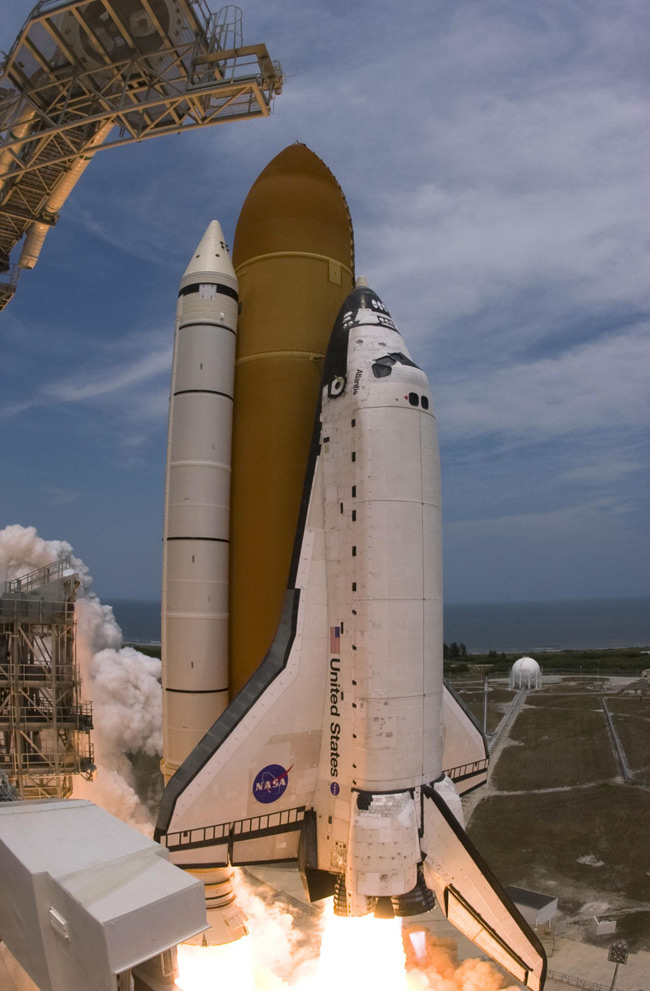
Space shuttle Atlantis blasts off from Kennedy Space Center in May 2009
For all its advanced design and materials, the shuttle was lifted by two SRBs and the vehicle's trio of LH2/LOX engines, and was arguably nothing more than a reentry-proof glider strapped to a V2 and a pair of massive fire-arrows.
That it was an impressive technological achievement isn't in doubt, but the 1986 Challenger disaster - caused by a failed SRB sealing ring - highlighted the inherent dangers of existing propulsion systems.
This and the 2003 loss of Columbia seriously compromised the US space programme's intended aim of a rapid series of affordable launches, with quick turn-around provided by the reusable vehicle.
The Russian equivalent - Buran - made just one unmanned orbital flight in 1988, in the process becoming the first vehicle to land automatically upon returning from space. It too depended on old-school lifting tech: an Energia rocket boasting four kerosene/LOX-burning boosters around four central core LH2/LOX powerplants.
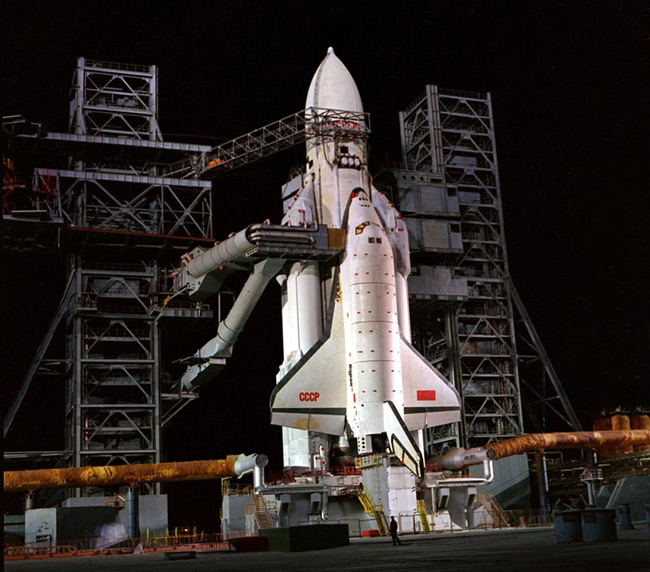
Buran on the launchpad
Buran was canned in 1993 due to a lack of cash following the dissolution of the Soviet Union. The US space shuttle similarly succumbed to financial constraints as NASA looked to cheaper methods to reach orbit.
The rocket-launched manned shuttle path to orbit ultimately proved to be a cul-de-sac, although the spaceplane idea lives on in the Boeing X-37.
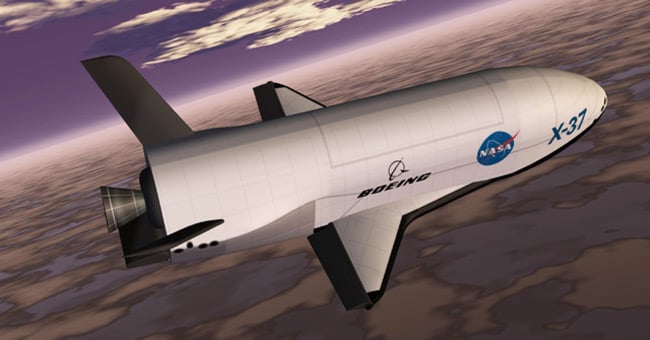
Artist's impression of the X-37
Originally designed to be carried in the space shuttle's payload bay, the robotic vehicle's first foray into space was atop a workhorse Atlas V in April 2010. With its own hydrogen peroxide/kerosene motor it is, like the Buran, able to fly itself back to base, following classified missions of several months' duration.
It's an impressive piece of kit, but it falls short of the ultimate goal: to develop a "single-stage-to-orbit" (SSTO) vehicle which powers itself to orbit without the need for a hefty leg-up.
On paper, this seems a simple enough proposition. However, to achieve a stable low Earth orbit (between around 160km and 2,000km altitude), you need to hit a very nippy 7.8km/s (28,080km/h).
This requires tremendous amounts of thrust and, with conventional rocket/jet motor tech, massive amounts of fuel. Before you've even got off the ground, your design is compromised by the huge powerplant and propellant weight.
Here are three very speedy ships, none of which came even close to LEO velocities, and two of which needed conventional aircraft assistance to leave the runway:
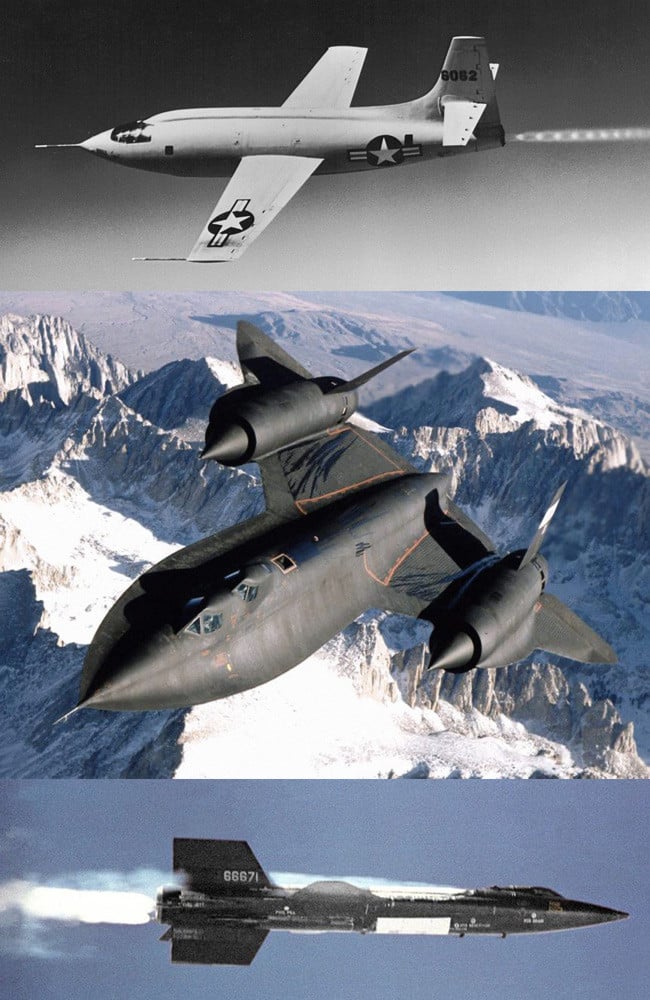
The Bell X-1, Lockheed SR-71 and North American X-15
The Bell X-1 required the services of a modified B-29 Superfortress to get up to launch altitude, at which point it was released from the mothership and its Reaction Motors XLR-11 kicked in. Like the V2, this burned ethyl alcohol mixed with water, and LOX, propelling the X-1 through the sound barrier in October 1947, when Chuck Yeager piloted it to 1,126km/h.
The X-1A variant later breached Mach 2, hitting 2,608km/h - again with Yeager at the controls.
The Lockheed SR-71 has since 1976 held the record for the fastest air-breathing manned aircraft, at 3,529.6km/h. Its pair of Pratt & Whitney J58 engines featured intake shock cones designed to keep air flowing into the engine at subsonic speeds, even when the SR-71 hits at least Mach 3 - a vital requirement for conventional jet engines.
The SR-71 gulped a special fuel - JP-7 - with a low flashpoint and high thermal stability, to prevent aircraft skin heating at high speeds and igniting the propellant in the tanks.
This exotic brew is "composed primarily of hydrocarbons, including alkanes, cycloalkanes, alkylbenzenes, indanes/tetralins, and naphthalenes", and is so reluctant to ignite that triethylborane (TEB) must be injected into the engine to start the party. TEB was also used to light the Saturn V's F-1 motors, while Space X's Falcon 9 uses a triethylaluminum/triethylborane combination as an igniter for its first-stage Merlin engines.
The North American X-15 boasts the record for the fastest speed ever reached by a manned aircraft - a whopping 7,274km/h. Early models carried a couple of XLR-11 motors, as used on the Bell X-1, later replaced by two ammonia/LOX Reaction Motors XLR-99s.
Depending on the variant, the X-15 carried enough fuel for between 80 and 150 seconds of motor burn following the drop from a B-52 Stratofortress mothership. Two 1963 flights, with Joseph A. Walker in the cockpit, edged into space at altitudes of 105.9km and 107.8km - a tad over the official boundary at 100km.
Mere mortals wishing to share that experience will soon be able to climb aboard Virgin Galactic's SpaceShipTwo, described as "an air-launched glider with a rocket motor and a couple of extra systems for spaceflight".
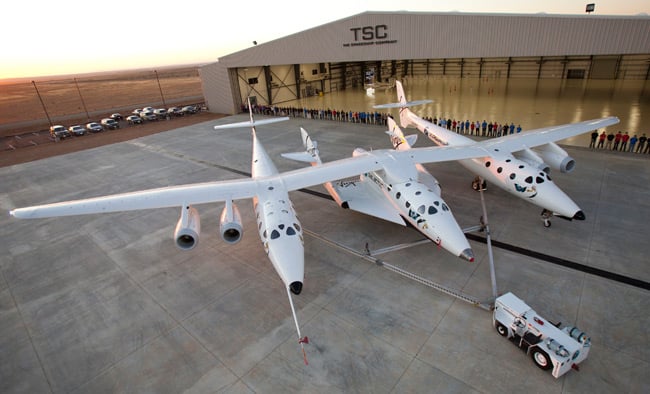
SpaceShipTwo under the Virgin Mothership Eve
After uncoupling from the White Knight Two, aka "Virgin Mothership Eve", at 15,200m, SpaceShipTwo will be propelled to 4,200km/h and a suborbital apogee of 110km.
The glider's engine is worthy of comment. It's a hybrid unit burning solid hydroxy-terminated polybutadiene (HTPB) and liquid nitrous oxide. A similar powerplant - packing HTPB and high-test peroxide (HTP) oxidiser - intended for use in the Bloodhound SuperSonic Car, rattled Cornwall last year during a test of the "biggest rocket fired in the UK for over 20 years".
